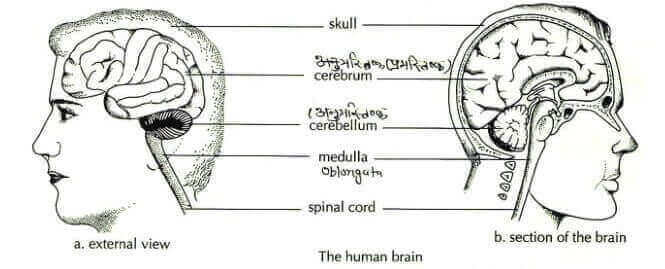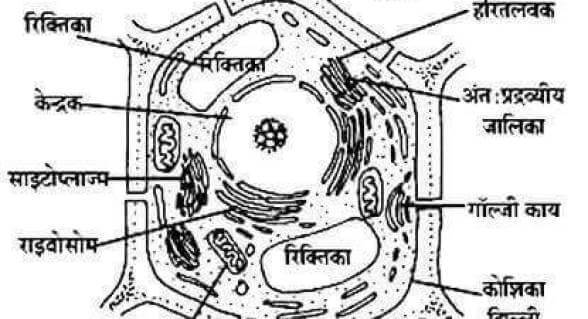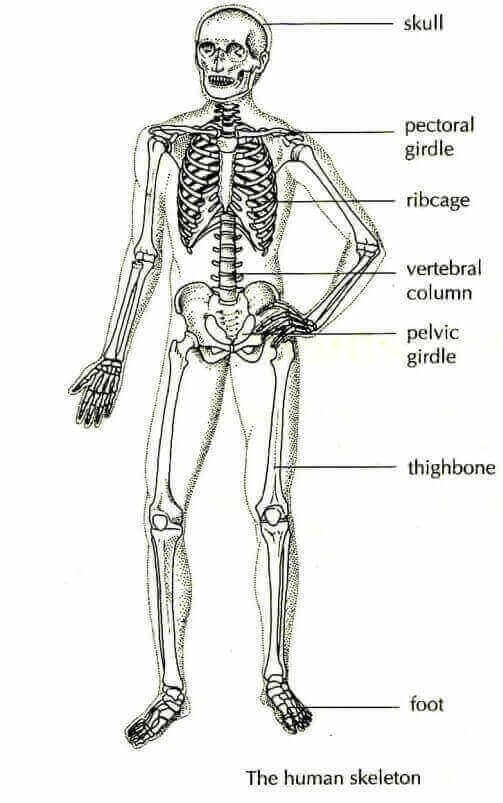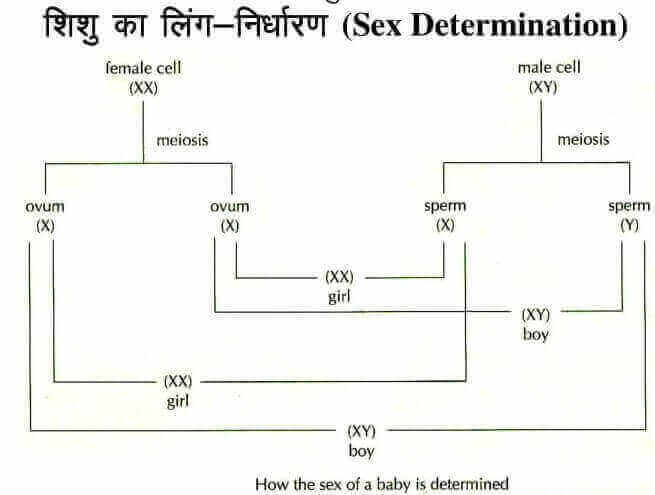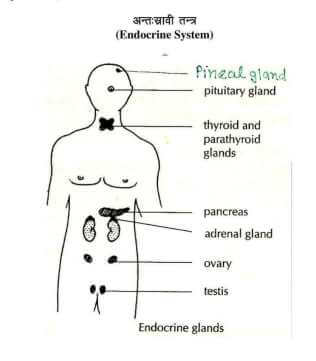What Is Called Cell » What is a cell

Cell Discovery : – Cell Is The ‘Structural’ And ‘Functional’ Unit Of An Organism.
It Was First Discovered By ‘ Robert Hooke ‘ With A Self-Made ‘Microscope’ (In 1665). The Discovery Of The Cell In The Living Medium Was Done In 1683 AD By A Scientist Named Antonivon Leuwenhoek. The Cell Can Be Seen By A ‘Light Microscope’. The Electron Microscope Was Discovered By Scientists Named Knoll And Ruska.
There Are 2 Types Of Cells-
( I ) Prokaryotic Cell
( Ii ) Eukaryotic Cell
There Are Mainly 2 Parts Of The Cell –
( I ) Cell Wall
( Ii ) Protoplasm
Cell Wall Forms The Outer Covering Of Any Cell, It Is Found Only In Plant Cells. This ‘Cellulose’ | Made Of (Cellulose). Whereas The Outer Membrane Of Animal Cell Is Called Plasma Membrane. It Is Made Of ‘Lipo Protein’.
‘ Protoplasm‘ – The Whole Part Except The Cell Wall Of Any Cell Is Called ‘Protoplasm’. Is. This Is The ‘Physical Basis Of Life’.
The ‘ Protoplasm ‘ Is Divided Into 2 Parts
(1 ) ‘Cytoplasm’
(2 ) ‘Nucleus’
Cytoplasm
The Part Between The ‘Nucleus’ And The ‘Plasma Membrane’ (This Is The Outer Covering Of Animal Cells) Is Called ‘Cytoplasm’ Or ‘Cytoplasm’. All The Essential Parts Of The Cell Are Found In This Part, Which Are Called ‘Cell Organelles’. ‘Cell Organelle’ Low
- Endoplasmic Reticulum This Is Called The ‘Skeletal System’ Of The Cell. That Is, Its Main Function Is To Provide Structure And Strength To The Cell. Ribosomes Are Attached To It , Which Perform The Function Of ‘Protein Synthesis ‘ .
2. Mitochondria – This Is Called The ” Power House ” Of The Cell . Because It Contains ‘Oxidation’ Of Food (Only Carbohydrates). Oxidation Of Food Is Called Cellular Respiration Or Internal _respiration. The Energy ATP Is Produced As A Result Of The Oxidation Of Food. Formed And Stored As
3. Plastids – These Are Of 3 Types
(I) Leucoplast – These Are Found In The Colorless Parts Of The Plant And Their Main Function Is To Store Food. For Example, Potato, Sweet Potato, Sugarcane Etc.
(Ii) Chromoplast – These Are Found In The Colored Parts Of Plants. For Example, In The Colored Part Of Fruits And Flowers. Tomato Red Color. It Is Caused By ‘Lycopene’. Similarly, The Color Of Carrots And Chillies Is Due To ‘Caroine’, ‘Bitanin’ Of Beet And The Color Of Brinjal Is Due To ‘Xanthocyanin’ I.E. ‘Lycopene’, Carotene, Betanine, Xanthocyanin Etc. Are A Type Of Chromoplast. .
(Iii) Chloroplast – It Is Called Kitchen Room Of Plant Cell. The Green Color Of Plants Is Due To This. The Main Component Of Green Leaves Is Chlorophyll, In Which Magnesium Metal Is Found. Its Main Function Is To Manufacture Food In The Presence Of Sunlight And In The Presence Of Carbon Dioxide Of The Atmosphere.
Note: Plastids Are Found Only In Plant Cells.
4. Lysosomes – It Contains Various Hydrolytic Enzymes. Their Main Function Is ‘Food. Digestion Takes Place. When It Bursts, It Destroys The Cell, Due To Which It Is Called The Cell’s Body. It Is Called Suicidal Bag Of The Cell. It Is Mainly Found In Animal Cells. It Absorbs The Waste Material Of The Cell.
5. Ribosome – It Performs The Function Of Making Proteins. Hence It Is Called ‘Platform Of Protein Synthesis’. (Platform Of Protein Synthesis).
6. Centrosome – It Is Found Only In Animal Cell. Its Main Function Is To Aid In Cell Division.
7. Golgi Body – This Cell Is Called Traffic Police. Its Main Function Is The Accumulation Of Fat. To Do And To Discharge. Note: All The Above Mentioned Cell Organelles Are Part Of ‘Cytoplasm’.
Nucleus
It Is Called The Director And Controller Of The Cell. The Nucleus Was Discovered By Robert Brown In 1831. It Is Located In The Middle Of The Cell And It Controls All The Functions Of The Cell. The Nucleus Is Surrounded By A Porous Membrane, Which Is Called ‘Nuclear Membrane’.
Nucleus Has Two Parts- (I) Nucleolus And (Ii) Nucleoplasm.
DNA And R. N. A. Are Found In The Nucleus.
(I) Smallest Cell – Pleuronea (PPLU)
(Ii) Largest Cell – Ostrich Egg (170 X 155 Mm)
(Iii) Longest Cell – Nerve Cell (Neuron)
Various Components Found In The Cell:
- 1. Most Water 75-85%
- 2. Protein 9% – 12%
- 3. Carbohydrate 2%
- 4. Fat 2% – 3%
- 5. DNA 0.4%
- 6. RNA 0.7%
- 7. Organic Matter 0.4%
- 8. Inorganic Matter 1.5%
Various Elements Found In The Cell:
- 1. Oxygen 65%
- 2. Carbon 18%
- 3. Hydrogen 10%
- 4. Nitrogen 2.5%
- 5. Calcium 0.15%
- 6. Sodium 2%
The Study Of The Cell Is Called ‘ Cytology ‘ .
Note: See ‘Cell Structure’ Figure No. 1
Cell Division
The Process Of Cell Division Was First Reported To Virchau In 1855 AD.
Cell Division Takes Place In Three Ways.
Amitosis : In Bacteria , Blue Green Algae, Yeast, Amoeba And Some Other Protozoa, Etc., Which Have Undeveloped Cells, ‘Mitosis’ Takes Place.
Mitosis : Mitosis Occurs Only In Somatic Cells.
- In 1882 AD, This Division Of The Cell Was Named Mitosis (Mitosis) By ‘Walter Fleming’.
- Mitosis Takes Place In 5 Stages Namely Interphase, Prophase, Metaphase, Anaphase And Telophase.
- The Period Between Two Cell Divisions In Which The Cell Prepares Itself For Division Is Called Interphase.
- Prophase Is The First Stage Of Division. By The End Of This The Nucleus Disappears.
- The ‘Chromosomes’ Come In Metaphase At The Equatorial Plate.
- Anaphase Is The Shortest Period (2-3 Minutes) To Complete. Chromatids In It
- Let Us Take The Shape Of UV Or L.
- The Final Stage Of Mitosis Is Telophase.
- Mitosis Results In The Birth Of Two Daughter Cells From One Parent Cell.
- Each Daughter Cell Formed As A Result Of Mitosis Has The Same Number Of Chromosomes As The Parent Cell.
- Due To Division, Organisms Grow And Develop. In Some Micro-Organisms, The Process Of Asexual Reproduction Takes Place Through This Division.
- Through Mitosis, New Cells Are Formed In The Body, Thus The Body Is Repaired And Wounds Are Healed.
Meiosis
- It Is Also Called Reduction Division.
- This Division Was Named ‘Meiosis’ In 1905 AD By Farmer And Moore.
- Towards Meiosis Was Made By Weissman And Its First Detailed Study Was Done By Strausswerger In 1888 AD.
- This Division Takes Place Only In Sex Cells.
- There Are Two Stages Of Meiosis (Meiosis-I And Meiosis-III)
- There Are Four Stages In Meiosis-I Division, Prophase-I, Metaphase-I, Anaphase-I And Telophase-I.
Protoplasm Is Found In The Cell, Which The Scientist Huxley Described As The Physical Basis Of Life.
The Maximum Amount Of Water Is Found In The Protoplasm Whereas The Highest Amount Of Protein Is Found In The Form Of Organic Matter.
what is a cell bio
It Was First Discovered By ‘Robert Hooke’ With A Self-Made ‘Microscope’ (In 1665). The Discovery Of The Cell In The Living Medium Was Done In 1683 AD By A Scientist Named Antonivon Leuwenhoek.
Cell Division
The Process Of Cell Division Was First Reported To Virchau In 1855 AD. Cell Division Occurs In Three Ways
Amitosis : In Bacteria, Blue Green Algae, Yeast, Amoeba And Some Other Protozoa, Etc., Which Have Undeveloped Cells, ‘Mitosis’ Takes Place.
Mitosis : Mitosis Occurs Only In Somatic Cells.
Nucleus
It Is Called The Director And Controller Of The Cell. The Nucleus Was Discovered By Robert Brown In 1831. It Is Located In The Middle Of The Cell And It Controls All The Functions Of The Cell.
Cytoplasm
The Part Between The ‘Nucleus’ And The ‘Plasma Membrane’ (This Is The Outer Covering Of Animal Cells) Is Called ‘Cytoplasm’ Or ‘Cytoplasm’. All The Essential Parts Of The Cell Are Found In This Part, Which Are Called ‘Cell Organelles’.
What Is The Main Function Of 'Lysosome'?
Food Digestion. The Lysosome Is Called The Atom Bomb Of The Cell.
Lysosomes Are Considered As The Digestive Sac Of The Cell Which Contains Hydrolytic Enzymes.
By Which It Helps In Extracellular And Intracellular Digestion.
What Is The 'Platform Of Protein Synthesis' Called ?
The ‘Ribosome’.
Which Part Of The Cell Stores 'Fat' ?
‘Galjibadi’ (Golgie Body)
What Is Called The 'Suicidal Bag Of The Cell' In The Nucleoplasm ?
To The Lysosome.
Who Is The 'Varni Lavak' Responsible For 'Carrot And Chilli' ?
Carotene
Where Does The Oxidation Of Food (Carbohydrates Only) Take Place ?
In Mitochondria.
What Is Called The 'Power House' Of The Cell ?
To ‘Mitochondria’.
What Is The 'Physical Basis Of Life' ?
Protoplasm
The Red Color Of Tomato Is Due To Which Chromoplast ?
‘Lycopene’.
Which Element Is Found In 'Chlorophyll' ?
Magnesium.
Nature's Largest Cell ?
Ostrich Egg (Ostrich Egg).
Smallest Cell ?
PPLO (Pleuro Pneumonia Like Organism) Or Mycoplasma.
Which Is The Smallest Organelle Of A Bacterial Cell ?
Have Ribosome
The Largest Organelle Of An Animal Cell ?
The Nucleus Is The Nucleus.
Whereas The Largest Cell Organelle Of Plant Cell Is Considered To Be Plastid .
The Longest Cell In The Human Body Is The Nerve Cell Or Neuron.




